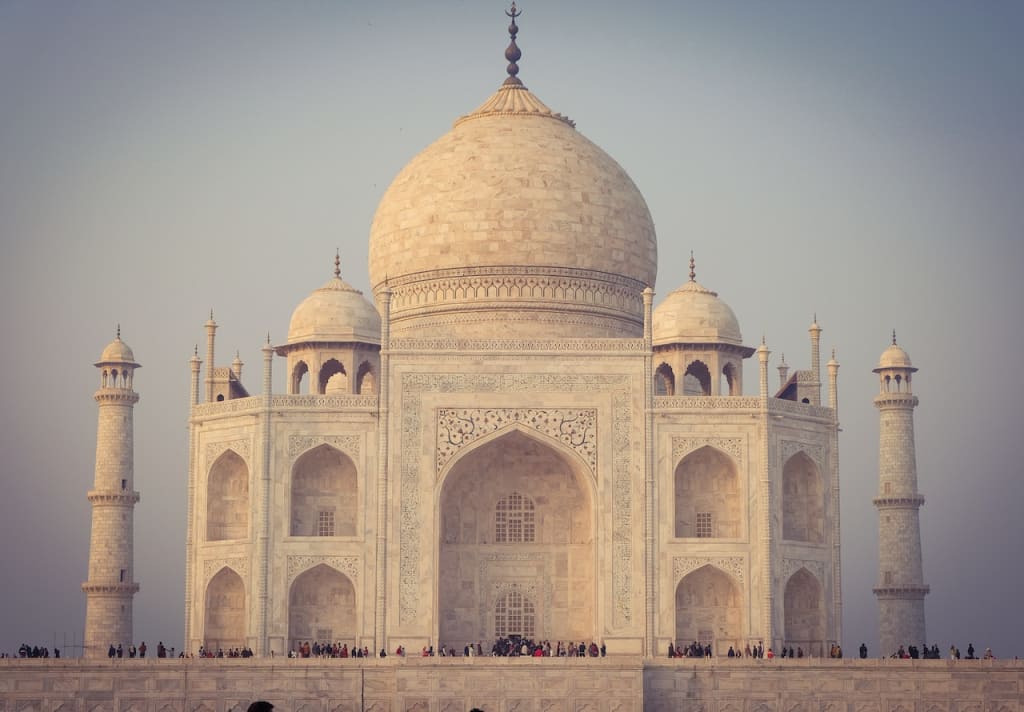The Taj Mahal: A Symbol of Love and Architectural Magnificence
The Taj Mahal is a testament to the enduring power of love and the skill and artistry of the craftsmen who built it.

The Taj Mahal is one of the most iconic and recognizable structures in the world. Located in Agra, India, this stunning mausoleum is a testament to the love of Emperor Shah Jahan for his wife Mumtaz Mahal. The Taj Mahal is an architectural masterpiece, and its beauty and grandeur have made it one of the most popular tourist destinations in India. In this article, we will explore the history, design, and beauty of the Taj Mahal.
History of the Taj Mahal:
The Taj Mahal was built in the 17th century by the Mughal Emperor Shah Jahan as a mausoleum for his beloved wife Mumtaz Mahal. Construction of the Taj Mahal began in 1632 and was completed in 1653. The construction of the Taj Mahal is said to have taken more than 20 years and required the labor of over 20,000 workers.
The Taj Mahal was built using the finest materials, including white marble, which was brought from Makrana in Rajasthan, India. The marble was carved and inlaid with precious stones to create intricate designs and patterns.
Design of the Taj Mahal:
The design of the Taj Mahal is a perfect fusion of Islamic, Persian, and Indian architectural styles. The structure is designed to be symmetrical, with the main building flanked by four minarets, each of which is over 130 feet tall. The Taj Mahal also features a large central dome, which is surrounded by four smaller domes.
The exterior of the Taj Mahal is decorated with intricate carvings and inlaid with precious stones, including turquoise, lapis lazuli, and jade. The interior of the Taj Mahal is equally impressive, with intricate carvings, beautiful calligraphy, and inlaid precious stones.
Beauty of the Taj Mahal:
The beauty of the Taj Mahal is truly awe-inspiring. The white marble structure is set against a clear blue sky, and its reflection in the surrounding pools only adds to its beauty. The Taj Mahal changes color depending on the time of day, and it is especially stunning during sunrise and sunset.
The intricate carvings and inlaid precious stones add to the beauty of the Taj Mahal. The carvings depict floral patterns, calligraphy, and other decorative elements that are a testament to the skill and artistry of the craftsmen who created them.
Facts about the Taj Mahal:
- The Taj Mahal is considered one of the Seven Wonders of the World.
- The cost of building the Taj Mahal was estimated to be around 32 million Indian rupees, which is equivalent to over 1 billion dollars today.
- The Taj Mahal is a UNESCO World Heritage Site and attracts millions of visitors every year.
- The minarets of the Taj Mahal are slightly tilted outward to prevent them from falling on the main building in case of an earthquake.
- The marble used in the construction of the Taj Mahal changes color depending on the time of day, giving the structure a constantly changing appearance.
Conclusion:
The Taj Mahal is a testament to the enduring power of love and the skill and artistry of the craftsmen who built it. Its beauty and grandeur have made it one of the most recognizable structures in the world, and its status as a UNESCO World Heritage Site ensures that it will be preserved for future generations. A visit to the Taj Mahal is a must for anyone visiting India, and it is sure to leave a lasting impression on all who see it.
personally Taj Mahal is my favorites place, it's a symbol of love must visit place once is life
About the Creator
Emmanuel Andrew
"I am a blogger and researcher who loves to write content about adventurous experiences and knowledge to share with readers. With a passion for writing and a love of travel, I seek out fascinating new perspectives."






Comments
There are no comments for this story
Be the first to respond and start the conversation.